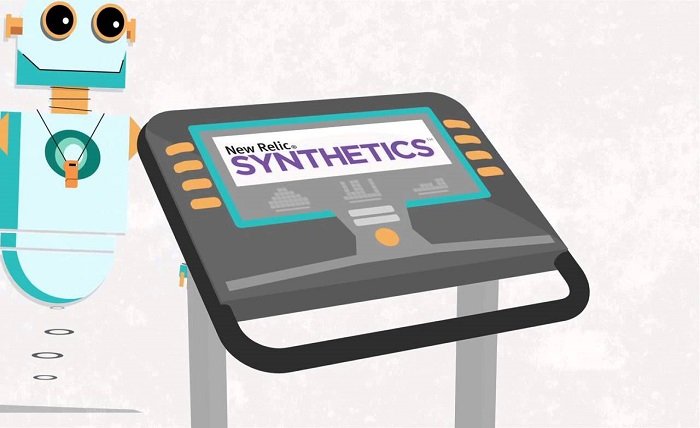Synthetics Monitoring in New Relic

Synthetic monitoring is an invaluable asset to developers and QA engineers, enabling them to test how a system reacts to specific user transactions or requests.
No matter if it is testing a new feature or API, synthetic tests are an invaluable way to quickly find solutions. By automating testing processes, developers and QA engineers can focus on what matters.
Identify the critical transactions and APIs
Synthetics monitoring can be an invaluable way to identify transactions and APIs that are impacting your business and establish a benchmark for how your application behaves.
Synthetic monitoring offers another great advantage, in that it enables you to proactively troubleshoot issues in your production environment before they cause real user disruptions. By being proactive about finding issues before they cause harm to real users, synthetic monitoring enables you to find issues which otherwise would have gone undetected after they happened.
For instance, if your login process is slow and this issue has become persistent over time, listing it as a key transaction within New Relic will allow you to monitor more closely using APM.
APM offers X-Ray sessions to give a closer examination of Key Transactions, providing further details as to individual component performance and any bottlenecks within your application. This X-Ray can help identify areas requiring improvement for maximum efficiency and enhance performance. Lean more about how to get synthetics monitoring to work in new relic.
Choose the locations from which to run your synthetics tests
With New Relic, you can set up and monitor multiple locations for synthetics testing. From San Francisco to Dublin and back again, choose your testing frequency and location from which to test applications for synthetics testing.
New Relic’s synthetic monitoring platform enables you to proactively test and optimize your applications to ensure they respond appropriately and promptly to user requests, while simultaneously discovering and solving performance issues before users experience them directly.
Synthetic monitoring works best when used alongside real user monitoring (RUM). RUM allows you to identify which user flows to test while being alerted of issues as soon as they arise in real-time.
Permissions systems enable you to restrict which users have view or edit access to synthetics monitors, locations and other entities in your synthetics monitoring environment. Groups provide an efficient means for assigning and managing user permissions.
Integrate with other monitoring and observability tools
New Relic’s synthetics monitoring can seamlessly integrate with other monitoring and observability tools to help you go beyond monitoring uptime alone. You’re now able to proactively optimize performance of APIs and applications while creating a great user experience for customers.
Synthetics monitoring can provide a useful way to evaluate how well third-party payment processing gateways perform for your application, by tracking response time and page load time of these external services on a global scale.
Additionally, network monitoring enables you to understand the availability and performance limitations of a client network so you can set realistic service level objectives without risking penalties or user complaints – something particularly helpful for MSPs or service providers with multiple clients’ networks under management.
Synthetic tests should simulate real user interactions to provide an accurate representation of your application or website’s performance. Examples of such synthetics tests include single URL browser monitors that emulate user visits to your application as well as series of click paths designed to replicate specific workflows within it.
Collaborate with other teams
New Relic Synthetics provides powerful application monitoring and troubleshooting tools right at your team’s fingertips. By simulating real user flows and behavior at any frequency from locations worldwide, synthetics tools allow your team to identify performance issues early and address them before impacting users negatively.
Synthetics testing differs from other testing methodologies by focusing on the business transactions and APIs that drive your digital customer experience. QA engineers can create test scripts that mimic an end user’s clickstream for form submission, shopping cart abandonment or gaming experiences.
Simulation transactions should be run prior to releasing new features or performing regular maintenance in order to detect obstacles before they become evident to real customers. They also allow developers and QA engineers to establish an ideal standard of how your system should operate.




